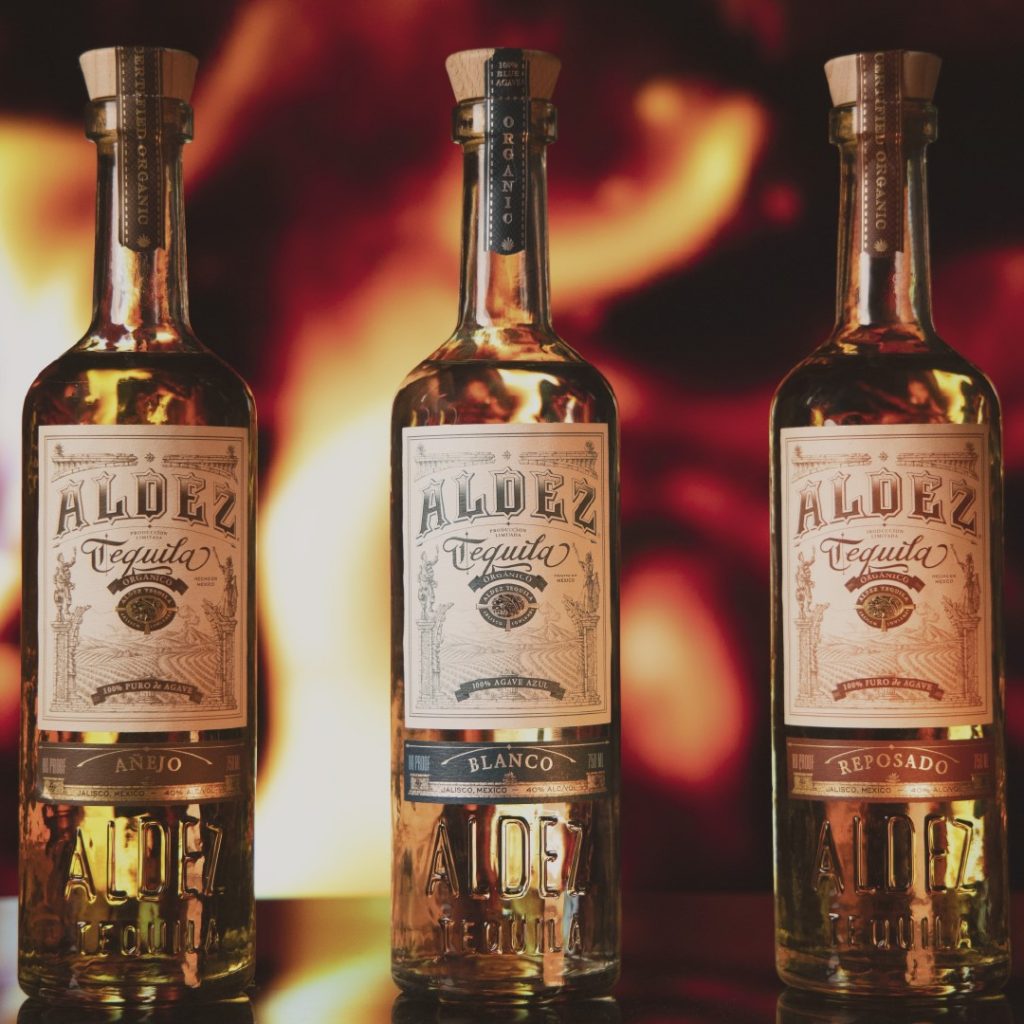
What you need to know when choose your next tequila bottle
Tequila enjoys widespread popularity, and it is a nightlife mainstay whether in shots, margaritas, or other summery classic tequila-based cocktails. Most of us have had at least a few cocktails including it. Sadly, at certain establishments, some patrons may have been duped with “gold” tequila shots – which in reality aren’t truly tequila at all but use a high-sugar mixto – possibly resulting in some nasty hangovers. Since Aldez is all about purity and enjoyment of life’s fine and simple pleasures, we’ll focus this article on authentic, genuine 100% blue agave tequila. And the key to deeply enjoying your tequila purchase is knowing a few key details to help guide your purchase.
Tequila Basics
First, it’s important to note that just like Champagne or Scotch, Tequila has denomination of origin and must follow strict guidelines by the CRT (Consejo Regulador de Tequila) in order to be classified as a type of tequila. Tequila must be distilled in one of five regions in Mexico to officially be considered tequila, and it must be distilled from 100% blue agave (specifically, from the Agave Tequilana Weber variety Azul). So whenever you make your purchase, be sure to check the bottle to ensure that you’ll be partaking of a fine quality beverage that’s worthy of your palette.
While there are technically five types of tequila, the three most common varieties that you’re most likely to purchase at a store for your home or encounter at the bar are Blanco, Resposado, and Añejo (the two less common are joven and extra Añejo).
Blanco tequila is the most popular and commonly known – the clear-as-water tequila served often in shots or mixed in cocktails. But Blanco’s older sisters are also worthy of attention and deserve a space on the shelf in your home bar for their more complex flavors. Let’s examine the difference between these three types of tequila and consider the factors to weigh when choosing one over the other when preparing your next tequila-based drink.
Blanco Tequila
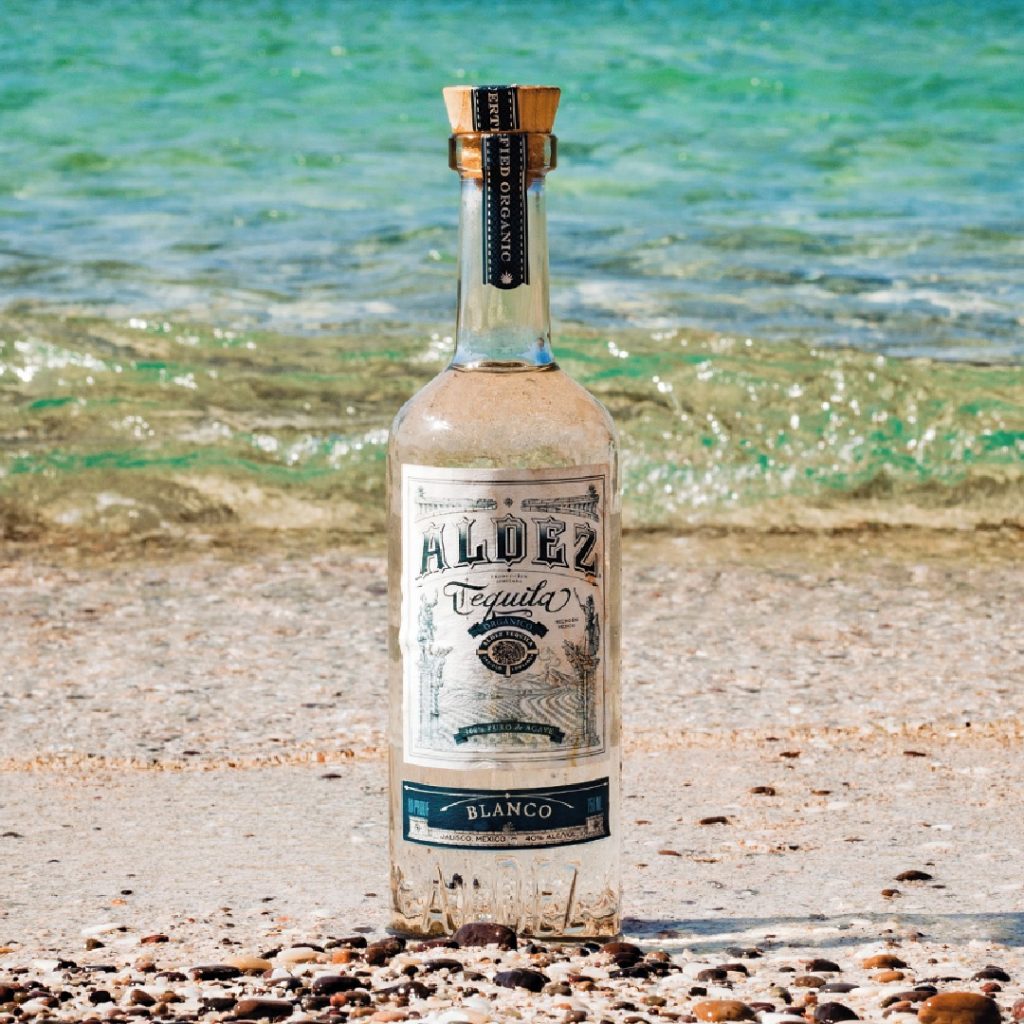 Blanco tequila has nothing to hide…because it can’t. This tequila can be aged up to 2 months in oak barrels, but most are not aged at all. A high quality Blanco tequila is unfettered with additives or aging. Our organic ultra-premium Blanco tequila is unaged, but rests in stainless steel tanks for 10 months before bottling. That time of rest allows the flavors to open up and ensures a smooth, clean finish.
Blanco tequila has nothing to hide…because it can’t. This tequila can be aged up to 2 months in oak barrels, but most are not aged at all. A high quality Blanco tequila is unfettered with additives or aging. Our organic ultra-premium Blanco tequila is unaged, but rests in stainless steel tanks for 10 months before bottling. That time of rest allows the flavors to open up and ensures a smooth, clean finish.
When Blanco tequila is 100% agave, there’s nothing but the taste of hand-picked agave that’s grown in the hot, Mexican sun before being cooked, fermented, and distilled. The two keys to producing ultra-premium tequila are the quality of the source agaves themselves (agaves high in sugar concentrations will produce higher quality spirits), and the distillation process. While lower quality tequilas will include a certain percentage of “heads” or “tails” from the distillation process, Aldez discards everything except for the “heart” of the liquid. Our commitment to such a high standard ensures that only the cleanest and purest liquid reaches our consumer’s lips. Discerning consumers will recognize high-quality tequilas by their clean, pure flavor and smooth, easy drinkability
Blanco tequilas form the foundation for all other tequilas in a brand’s line, since Reposado and Añejo varieties are produced by transferring Blanco into barrels to undergo the aging process. Thus Blanco tequilas reveal the essence of any brand – to discern the quality of any of the brand’s offerings, always try their Blanco first.
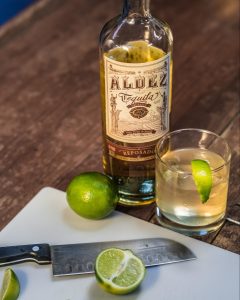
Reposado Tequila
Reposado tequilas are born after Blanco tequila has rested in barrels for at least two months, but less than a year. This time period is a sweet spot to give the tequila a more character and sweet notes from the barrels Most often, oak or white oak barrels are used, giving the liquid vanilla and caramel flavors and a light amber color.
The final flavor of the finished product will vary depending on which type of barrels are used to age the tequila, and for how long the tequila is aged.
Añejo Tequila
 If you continue to age Blanco tequila for over a year – but less than three years – the result is the Añejo variety. At this stage, the tequila absorbs a deep amber color, giving it a rich, molasses-like nose and an earthiness that is otherwise unachievable with a younger tequila.
If you continue to age Blanco tequila for over a year – but less than three years – the result is the Añejo variety. At this stage, the tequila absorbs a deep amber color, giving it a rich, molasses-like nose and an earthiness that is otherwise unachievable with a younger tequila.
Due to its robust flavor and color, one could equate an Añejo to a cognac or brandy. For this reason, Añejo is generally considered a sipping tequila. That isn’t to say you can’t mix an Añejo in a cocktail; when used smartly, it can add a world of flavor to an otherwise relatively simple cocktail.
How to Drink Different Types of Tequila
High-quality tequila rewards its drinkers with flavors that perfectly align with their own unique tastes and preferences, making indulging in tequila-based drinks a beautifully personalized experience. It’s already been noted that Blanco is often used for shots or classic cocktails and Añejos are great for sipping, but that is an oversimplification when it comes to exploring the application of each of these kinds of tequila. While part of the magic of tequila is exploring its flavors with a unique and creative spirit, below are a few suggestions for how to maximize your enjoyment.
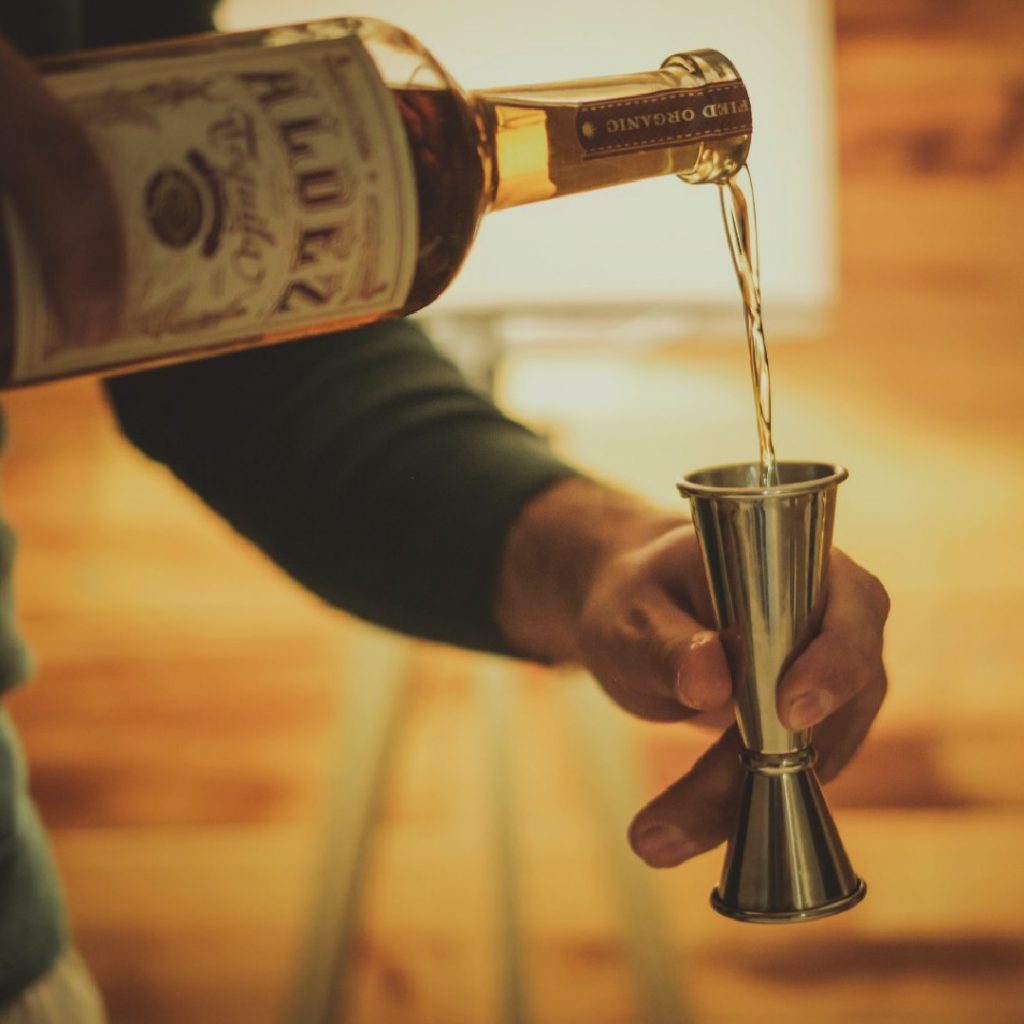
A good Blanco tequila would work well in most cocktails, but you should reserve something like a Tequila Old-Fashioned (or a similar, not-so-sweet, tequila-forward cocktail) for a Reposado or, even better, an Añejo. You can create a spin off of most classic clear-spirit cocktails using Blanco tequila – like a Bloody Maria, Mexican Mule, or Tequila Sour.
If you swap in a Reposado for any cocktail you’d use a Blanco in, it will give more character to the flavors in the drink. Keep in mind that a Reposado will add a bit of warmth from the vanilla and caramel flavors that would otherwise be absent by using a Blanco tequila.
While you probably don’t want to make a frozen margarita using store-bought mix with an Añejo, that doesn’t mean you can’t elevate a traditional margarita by using an Añejo with fresh lime juice (not from concentrate) and Grand Marnier, rather than a run-of-the-mill orange liqueur. The Grand Marnier would certainly punch up the sweet, oaky notes thanks to it being a cognac-based liqueur, but it still does the job of adding that quintessential orange flavor.
That said, an Añejo is expertly crafted and aged to shine all on its own, so it is usually recommended to be savored neat or on the rocks. With a Reposado or Blanco tequila, you have more flexibility to play with the flavors and get creative.
Here’s to your next tequila adventure
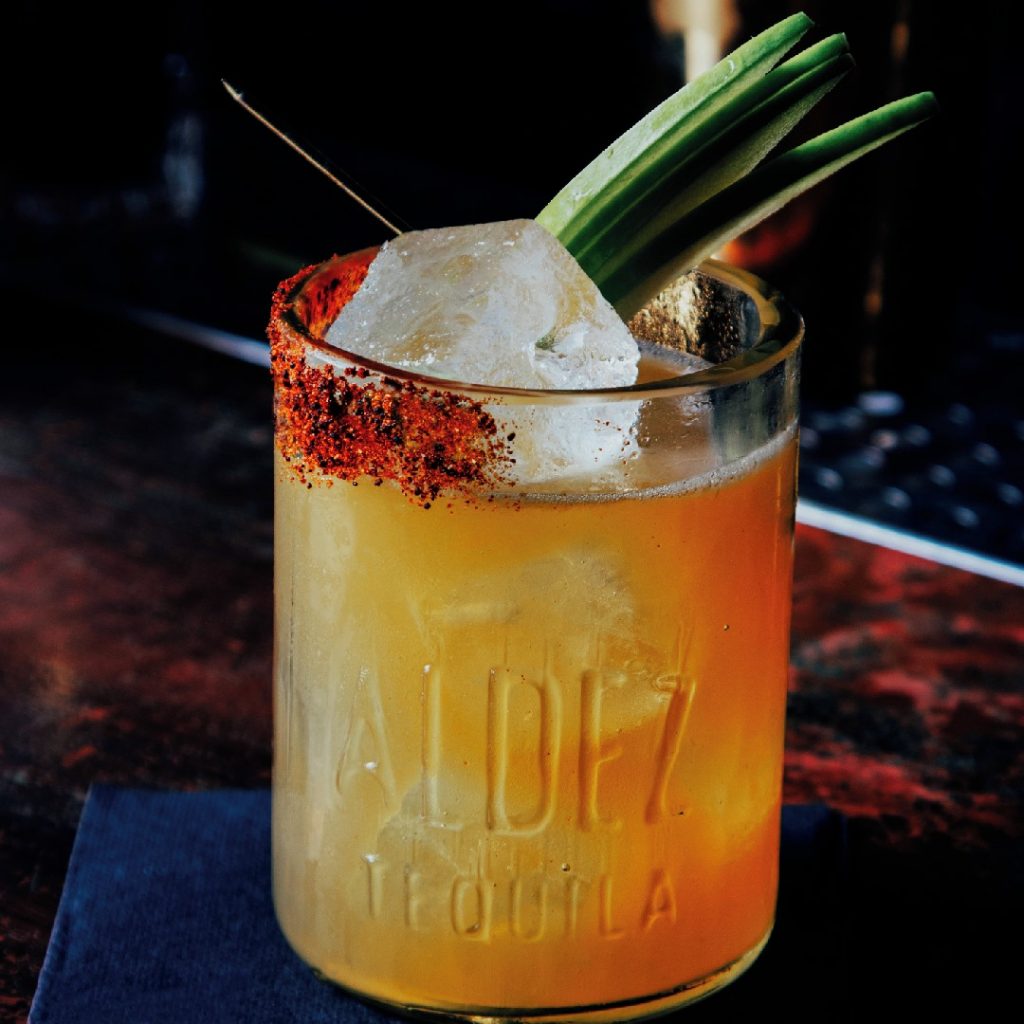 With the nearly endless variety of flavors that can be created and enjoyed with Blanco, Reposado, or Añejo tequilas, we hope you’ll indulge in your imagination and savor your next tequila to the utmost extent. Should you choose Aldez tequilas, you can be sure that no matter which of our varieties you choose, our quality, authenticity, and commitment to organic, pure and sustainable practices never vary.
With the nearly endless variety of flavors that can be created and enjoyed with Blanco, Reposado, or Añejo tequilas, we hope you’ll indulge in your imagination and savor your next tequila to the utmost extent. Should you choose Aldez tequilas, you can be sure that no matter which of our varieties you choose, our quality, authenticity, and commitment to organic, pure and sustainable practices never vary.
From our certified organic tequila itself to sustainably sourced bottles and labels, you can responsibly enjoy our tequila with a conscience as clear as our unparalleled Blanco.
